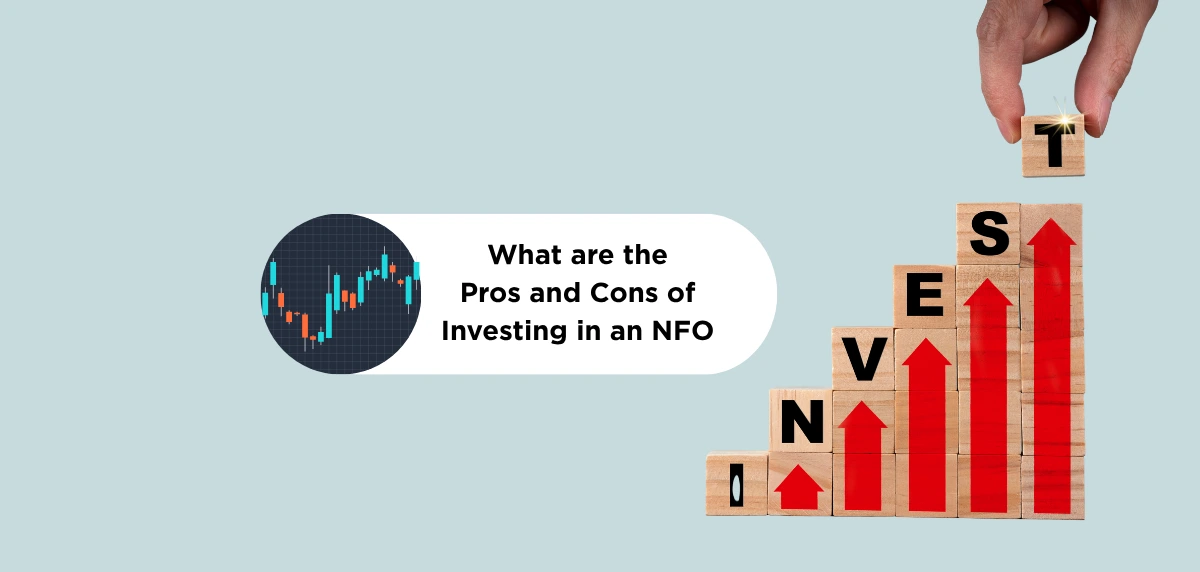What is an NFO?
A New Fund Offer represents the initial subscription period when an asset management company launches a fresh mutual fund scheme, seeking capital from investors. The difference between NFO and IPO is that, as opposed to the latter, you acquire mutual fund units instead of individual company shares. During this launch phase, fund managers collect capital to build a portfolio according to predetermined investment objectives and strategies.
Follow along to learn the pros and cons of NFO, so you can make an informed decision about adding one to your portfolio.
How Does an NFO Work?
The NFO process follows a structured timeline. It begins with the fund house filing necessary regulatory documents and concludes with the fund's transition to regular trading.
Knowing how to invest in an NFO is a simple task:
- Look for the subscription window, which typically remains open for 15 to 30 days
- During this period, units are offered at a fixed price, usually Rs. 10 per unit.
The pooled capital is then allocated according to the fund’s stated objectives, which may include equity, debt, or a mix of instruments. Some NFOs also come with a lock-in period, especially if they are thematic or tax-saving schemes. You cannot redeem or sell the units until that timeframe ends.
Once the subscription period concludes, the fund transitions into regular operations where units trade at Net Asset Value (NAV). The NAV fluctuates daily based on the underlying portfolio's market value, reflecting gains or losses in the securities held by the fund. This transition marks the beginning of the fund's performance tracking period, establishing the baseline for future comparison and evaluation.
Pros and Cons of Investing in an NFO**
Here are some of the pros and cons of an NFO:
Advantages
1. Access to Fresh Themes or Strategies
Many NFOs introduce innovative investment themes not always found in older mutual funds. This can enhance portfolio diversity by tapping into emerging markets or upcoming sectors.
2. Early-Stage Entry Potential
Entering a fund at its inception may provide a first-mover advantage if the fund’s underlying assets perform well. While the price is usually fixed at the launch, subsequent NAV increases can generate considerable gains over time.
3. Positioned for Market Trends
NFOs frequently target specific market inefficiencies or emerging opportunities that established funds might overlook due to their existing mandates or size constraints. Being part of these could deliver notable returns if the theme gains momentum.
4. Experienced Support
Asset management firms typically delegate skilled fund managers to new NFOs, hoping to establish a strong track record. They often have the flexibility to implement innovative strategies without the constraints of managing large existing assets.
5. Possible Tax Advantages
Certain NFO categories, particularly ELSS funds, offer tax benefits under Section 80C of the Income Tax Act, providing dual advantages of investment growth potential and tax liability reduction.
Disadvantages
1. Lack of Historical Performance
Among the wide range of pros and cons of investing in an NFO, a significant drawback is the absence of any performance track record. Without this, investors cannot assess how the fund might perform across different market cycles. This makes it challenging to evaluate the fund manager's ability to execute the stated investment strategy effectively.
2. Elevated Costs
NFOs often carry higher expense ratios during initial years as fund houses recover launch costs and marketing expenses. These elevated costs can significantly impact net returns, particularly if the fund fails to achieve its performance objectives.
3. Market Timing Risks
If the NFO launches in turbulent markets, short-term volatility might hamper its initial performance. This can potentially set the fund back when compared to existing alternatives.
4. Limited Information
During the subscription window, only a basic offer document may be available. Unlike established funds that provide comprehensive performance data, portfolio holdings, and detailed analysis, NFO investors must rely primarily on these documents and fund manager credentials.
5. Restricted Liquidity
Until the fund officially transitions to a standard mutual fund, the new units are typically not tradable on an exchange. This delay can be problematic for investors who need quick access to their capital or wish to adjust their portfolio allocation shortly after investment.
Deciding whether to invest in an NFO depends on your personal risk tolerance, financial objectives, and market perspective. Before you venture into one, examine its proposed investment strategy, the reputation of the fund house, and the background of the fund manager. Reviewing these critical factors can help you decide if an NFO fits your portfolio. By weighing the pros and cons of an NFO, you can make a balanced, well-researched choice for your finances.
** Tax exemptions are as per applicable tax laws from time to time.





















